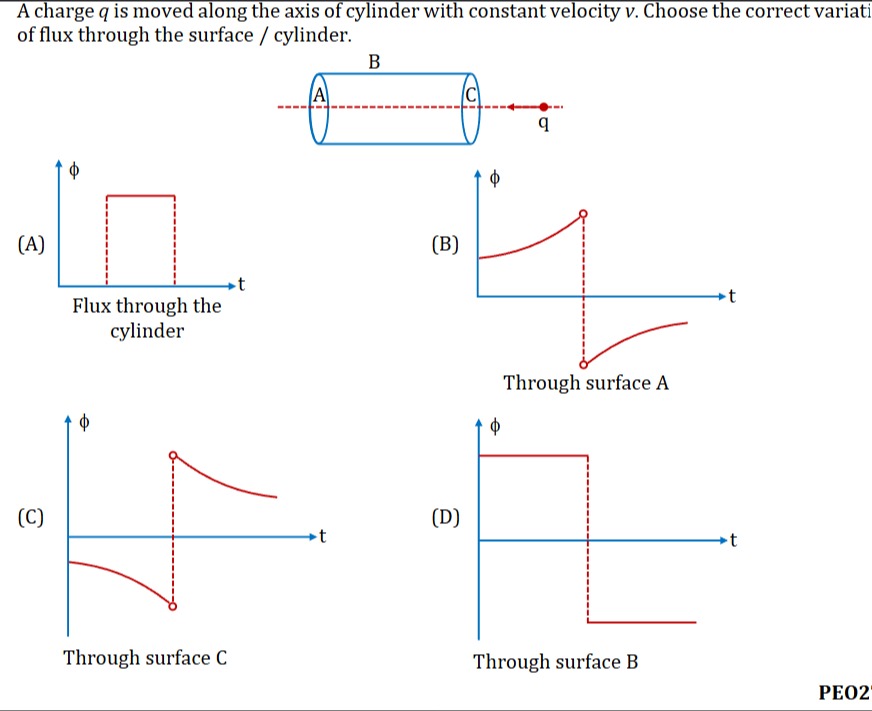Question
Question: A charge $q$ is moved along the axis of cylinder with constant velocity $v$. Choose the correct vari...
A charge q is moved along the axis of cylinder with constant velocity v. Choose the correct variation of flux through the surface / cylinder.

Flux through the cylinder
Through surface A
Through surface C
Through surface B
A, B, C
Solution
-
Flux through the entire cylinder (closed surface): According to Gauss's Law, the total flux through a closed surface is Φtotal=ϵ0Qenclosed. When the charge q is outside the cylinder, Qenclosed=0, so Φtotal=0. When the charge q is inside the cylinder, Qenclosed=q, so Φtotal=ϵ0q. As the charge moves along the axis, it enters the cylinder at some time t1 and exits at some time t2. Before t1, Φtotal=0. Between t1 and t2, Φtotal=ϵ0q. After t2, Φtotal=0. This describes a rectangular pulse for the total flux, matching option (A).
-
Flux through surface A (left end cap): Let the cylinder be along the x-axis. Surface A is at x=0. The flux through A is positive when the charge is to the right (xq>0) and negative when the charge is to the left (xq<0). As the charge moves from right to left, the flux through A transitions from positive to negative, matching the general behavior shown in option (B).
-
Flux through surface C (right end cap): Surface C is at x=L. The flux through C is negative when the charge is to the right of the cylinder (xq>L) and positive when the charge is to the left of the cylinder (xq<L). As the charge moves from right to left, the flux through C transitions from negative to positive, matching the general behavior shown in option (C).
-
Flux through surface B (curved lateral surface): The flux through the curved surface is complex and does not typically exhibit the sharp step-function behavior shown in option (D). Therefore, option (D) is incorrect.
